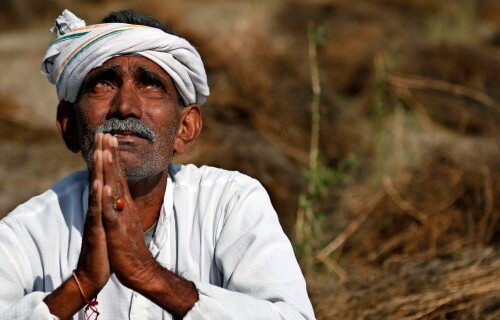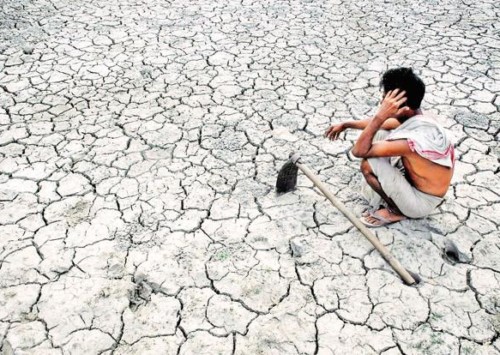World Suicide Prevention Day 2020: India making a parody of suicide prevention
On World Suicide Prevention Day, observed annually on September 10, India holds an unprecedented record of suicide attempts and suicide deaths owing to the pandemic, economic crisis, lockdown stress and lack of suicide preventive measures. The insensitivity of media and unperturbed attitude of the current government only worsens the situation.
While India may rejoice the witch-hunt and arrest of its current favourite villain, Rhea Chakraborty, who is still under investigation, as part of the probe into actor Sushant Singh Rajput’s death, there is little doubt that the way this suicide case is being handled, has absolutely nothing to do with preventing further suicides in the country.
According to the suicide data collection done by the World Health Organisation (WHO) from its 194 member states, close to 800,000 people die of suicide annually which boils down to one death every 40 seconds. This number is not taking into account the 20 million suicide attempts each year. China and India, being the two most populated countries in the world, account for more than 40 pc of the total number of suicides globally. According to the WHO’s study of data, till the previous year, India held an unfortunate record of one suicide death every seven minutes which has now worsened to one suicide death every four minutes. Suicide is also to be the most common cause of death in the age group of 15-29 years.
India’s harsh coronavirus lockdown has seen a spike in cases of mental illness, with experts warning that distress calls and reports of suicidal tendencies had been alarmingly high since the confinement began on March 24. The Suicide Prevention India Foundation (SPIF) conducted a study in May, after noticing a spike in the number of people searching ‘suicide’ on Google, seeing reports of virus-related suicides and receiving nearly thrice the usual number of e-mails and calls related to suicide ideation and emotional distress.
“The ‘new normal’ that the pandemic has forced people to adapt to has aggravated the deteriorating mental health conditions in the country. The lockdowns have not gone well for the mental health condition of people in India, which already records the highest number of suicides globally,” says Shivarama Varambally, professor of psychiatry at the National Institute of Mental Health and Neurosciences (NIMHANS).
“The lockdown has increased the already prevalent risks related to mental illness, financial insecurity and work stress, and has added new ones like loss of control, depletion of social networks, job uncertainty, abuse and social isolation,” Nelson Vinod Moses, founder of SPIF, tells Media India Group.
“Rural India is particularly susceptible to suicide due to the influx of unemployed migrant workers and also because it is home to the at-risk farming community. The economic crisis in the near future may create more panic, mass unemployment, poverty and homelessness which will possibly surge the suicide risk or drive an increase in the attempt to suicide,” Moses adds.
It is undeniable that government’s utter failure to address mental health issues on an urgent basis seems to have caused an increasing number of suicides, not only in metro cities but in places like Jharkhand, Odisha, Bihar and Himachal Pradesh. The usual ‘Happy Go Lucky’ populace is now resorting to suicides. A majority of the victims in the country are from the younger generation.
However, the Indian government seems unconcerned of this threat. A United Nations Organisation (UNO) policy report on Covid-19 and mental health says that though most countries spend only around 2 pc of their health budgets on mental health, the scenario in India is worse. This year’s budgetary allocation for mental health by the government is a negligible 0.05 pc of the total healthcare budget. Apart from publishing a helpline number since the onset of the pandemic, the Modi government has come up with no further efforts in this area even as suicide rates have been spiking up everyday across the country.
Moreover, the government’s overall healthcare expenditure is a paltry 3.5 pc of GDP according to World Bank data, a proportion which has been declining since the current government took over reins at the Centre, whereas the international average is a good 10 pc of GDP.
Many countries, including China, have been able to significantly reduce suicide attempt rates in the past few years after they implemented a suicide prevention policy. However, in India, attention to mental health is still inadequate. “Health workers are still pressing for the implementation of the Mental Health Act introduced three years back, in 2017 that promises to provide mental health care to all and introduce a suicide prevention policy,” says Moses.
As the citizens of the country pay for decades of neglect of mental health and under-investment in the mental health sector, the media has also played a key role in shifting the narrative of suicide prevention policies and mental health awareness, that caught up with the common people’s discussion after a successful celebrity’s death, to that of a mere blame game and TRP marathon.
“Only the government and its negligence alone have not pushed around a thousand to resort to suicide in the last six months. The media and our society as a whole are to be blamed. This country is mired in the most grotesque and prurient parody of how a society should act to prevent suicides,” adds Moses.












